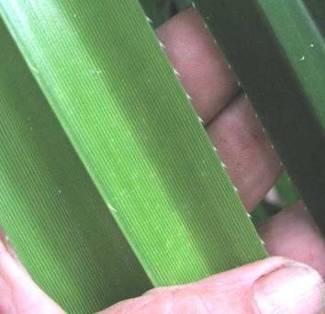

Above you see a 25-ft-tall (7.5m), much-branched, unusually large (for the Yucatan) specimen of a species that surely is one of the most misidentified and underappreciated of our ornamental plants. This one is at Hacienda Chichen Resort adjacent to Chichén Itzá ruins.
It's the Screw-pine, a member of the genus Pandanus, maybe Pandanus veitchii from Polynesia. About 600 Pandanus species are recognized. The main difficulty in being sure which species we have is that flowers seldom or never appear here, and flowers are needed to identify them.
Screw-pines are unrelated to pines. They're vaguely like palms, yuccas or enormous amaryllises, but they're not closely related to those plant groups either. They're their own thing, members of the Screw-Pine Family, the Pandanaceae. Screw-pines are native to the Old World tropics, mostly of Malaya and the Pacific islands. They are monocots, like grasses and lilies. Plants are either male or female.
In the Yucatan mostly you see only young individuals without well developed stems. People plant them expecting them to look like leafy agaves, never dreaming that if left alone they'll grow to tree size. Also, mature Screw-pines develop prop roots like those shown below:

If you're unsure whether you have a baby Screw-pine or something similar, check out the leaves. They should be stiff like plasticised paper, with a prominent midvein amidst many parallel secondary veins, and bear sharp, thick-based little spines on the margins like those shown below.
